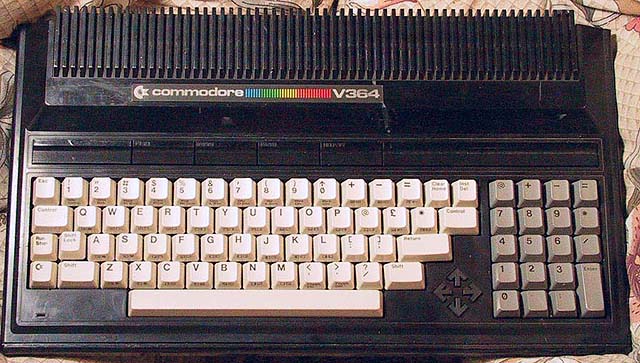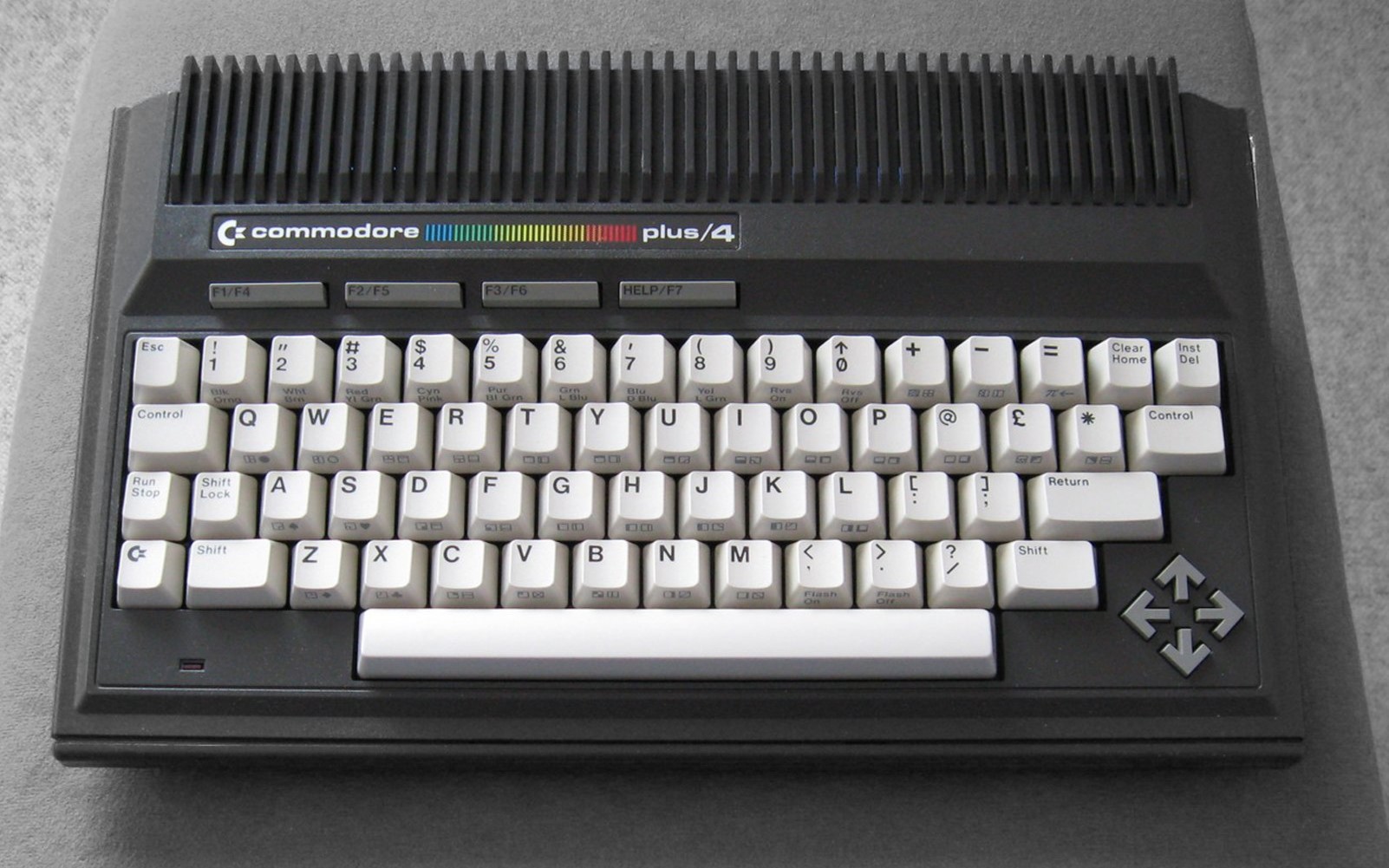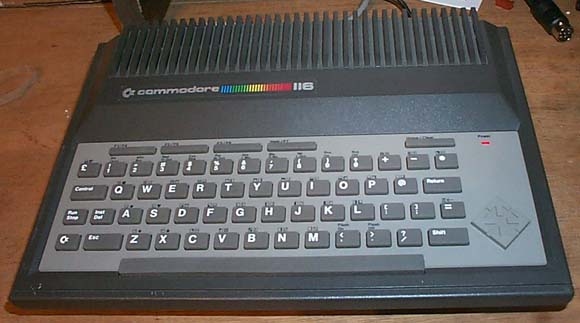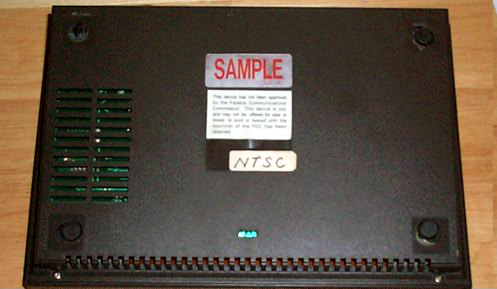Getting Back to Business
As the Commodore 64 flourished, CEO Jack Tramiel felt they needed a line of computers that use less chips and fix issues the VIC-20
and 64 had. He also stated the company was weak in the business market, as their last successful business-oriented machine was the
PET. So they proposed a new line of computers called the "264" line, a name that indicates the machines were successors to the 64,
but not replacements for it. Each computer came with a more sophisticated BASIC version 3.5 that included more complex graphical
and simplified disk and cassette drive communication commands.
New Chips on the Block

For this new line, Commodore devised two new chips. The first was a CPU called the 7501, which was mainly a refined 6510 used by
the C64. More importantly, they devised the TED (the meaning behind the acronym is hardly agreed upon online) chip. In most ways,
it's similar to the VIC-II chip found in the VIC-20. For example, it was designed to handle the graphics, sound, and input/output
on its own. Another similarity is the two-voice sound. One voice is always squarewave and the other can be programmed to either
also be squarewave or white noise.
The Three TEDs
Jack Tramiel's original plan for this new line was to offer three different computers to give consumers a choice on how much they'd
be willing to spend. Here's what was prototyped based on his plan...
Cheapskate
He envisioned a low-end machine that would just serve as a basic home computer and could be sold for $49. This came to be the
Commodore 116. It had 16 KB of RAM and no built-in applications.
The 116 was also made to compete with the Timex Sinclair computers that came out in 1983, specifically, the 1500. What's worth
noting is how similar the 116 and 1500 are, down to the rubber chiclet keyboard, size, and shape. It turns out this was also part
of Tramiel's plan because although the keyboard wasn't great, it was cheaper to produce this way and thus they could charge less
for the computer.


64 II?
Next, he thought there should be a medial-budgeted machine that would be sold for $79. During purchase, the customer would choose
from an array of business applications like a word processor, spreadsheet, database, or graphs to be pre-installed by way of ROM
chips. The computer that was prototyped under these stipulations was the 264. Originally designated as the flagship model of the
line (if the name didn't give it away), it came with 64 KB of RAM and 32 KB of ROM.

Rolls-Royce
Last was a top-of-the-line machine that would have a speech synthesizer and a better version of the GUI-based program Magic Desk
built in. This came to be the V364, initially without a price, but would've been "slightly more" than the 264. It had the same
amounts of RAM and ROM as the medial-speced machine, but unlike it, the V364 came with a keypad and 256-word voice synthesizer
(hence the V).

What Could've Been
Along the way, some more machines for the 264 line were conceived. One that images exist for is the 232, which apart from having
32 KB of RAM and the nameplate reflecting it, is identical to the other prototyped machines. At one point, Commodore introduced
a 1542 disk drive that was nothing more than a dark-gray 1541 to match the 264 computers. It's possible the 264s were going to be
compatible with the 64's peripherals but this drive never entered production. Instead, a totally incompatible dark-gray disk drive
called the SFS 481 was prototyped and released as the 1551.



The Rebellion of 1984
At the Winter CES, Jack Tramiel showed off the 264 and V364 prototypes, promising to start shipping by June. But on January 15,
unexpectedly, he resigned from his own company! The internet can't really agree on why he resigned either, as he claimed he was
contemplating retirement for a few years. Yet, he ended up joining Atari. In addition to Tramiel's plans for the 264 machines being
in limbo, four other top executives left the company, leaving the remaining management unsure of what to do next. So, six months
later, most of the middle and technical management left within a week.
The Hijacking
When new management arrived, they took the 264 line in an entirely new direction. The 264 computer was renamed the Plus/4 and ended
up using a "3+1" ROM with all the aforementioned business programs built into one chip, causing the computer's price to soar to
$299. This built-in business application concept originated from Michael Tomczyk's MAX Machine when it got cancelled following the
management overhaul. The word processor only allowed you to type in 99 lines, and 40-column text was not optimum for such an
application. There is an explanation for this, as in each program, some sacrifices had to be made to fit them in 32 KB of ROM, such
as multi-line spacing and a print preview. A "Plus/Extra" disk was offered to put these features back in, though.
But if there's any part of Tramiel's original plan that was maintained, it was that the Plus/4, 16, and 116 were released in June
1984. The 116 came in limited quantities in Europe, but the NTSC prototype shows a US release almost happened.



The entire line was laden with issues. For starters, none of the machines were compatible with any VIC-20 and 64 software and few
of their peripherals. Many of the ports found on the back of the machines were specific to the 264 line, meaning the only
peripherals that could be connected were ones made specifically for them such as the 1551 disk drive, 1531 cassette drive, and
T-1341 joystick. The machines lacked hardware sprites, a heavily-favored feature of the C64. The TED chip had only two-voice sound,
which was a major downfall from the C64's signature SID chip. All in all, despite the TED being able to display 121 colors, it
didn't make any of the 264s good for gaming or business. And because it did so much internal work, it was prone to overheating and
shorting out, requiring a heatsink to solve this issue. The power supply was also likely to overheat but I don't know why.
Collectively, these problems would mean spending more money to fix whichever computer they had or on new equipment than the initial
purchase, so most chose to buy or stick with the Commodore 64.
Each computer had its own issues, too. The Plus/4 had 64 KB of memory, meaning the 16 and 116 could not run software written for it
since they only had 16 KB. Because of this, most users just wrote all software on either of the 16 KB machines to run it on the
others. Finally, the 116's rubber chiclet keyboard was generally frowned upon, although marginally better than the membrane keyboard of
Sinclair's ZX81/TS1000. When the 264 line ended production in 1986, only a million units were sold. 400,000 of these were Plus/4s, and
the rest were 16s and 116s. Commodore stopped producing them to free up supplies for the 64.

 For this new line, Commodore devised two new chips. The first was a CPU called the 7501, which was mainly a refined 6510 used by
the C64. More importantly, they devised the TED (the meaning behind the acronym is hardly agreed upon online) chip. In most ways,
it's similar to the VIC-II chip found in the VIC-20. For example, it was designed to handle the graphics, sound, and input/output
on its own. Another similarity is the two-voice sound. One voice is always squarewave and the other can be programmed to either
also be squarewave or white noise.
For this new line, Commodore devised two new chips. The first was a CPU called the 7501, which was mainly a refined 6510 used by
the C64. More importantly, they devised the TED (the meaning behind the acronym is hardly agreed upon online) chip. In most ways,
it's similar to the VIC-II chip found in the VIC-20. For example, it was designed to handle the graphics, sound, and input/output
on its own. Another similarity is the two-voice sound. One voice is always squarewave and the other can be programmed to either
also be squarewave or white noise.








